Okay, I have to make a statement before I go further in this post. I am going to be doing another post on Frederic Leighton’s Flaming June in the near future because the university near me is hosting the painting right now. I AM SO EXCITED. It is almost in my backyard. I have flown to DC (when I was 24) and to NY to the Met (two years ago) to see it and now it is about 15 minutes away. I plan to go see it often and also to try and make a gigantic capture of it. Wish my luck! If you happen to be in the SLC area, the BYU Museum of Art is currently hosting it along with some other amazing paintings.
Onto the images!
I’ve always loved this painting. It is one of those iconic images that you can’t imagine changing anything. Something that always strikes me about this and so many other masterworks is how they aren’t all that detailed. There is a great effort to narrow down what information is necessary. Certainly, there are artists like Tadema and Gerome that paint incredible details, but Leighton, like Velasquez, Rubens, Ribera, and so many other great artists, chose to be very economical with what they depicted. I think in the age of very detailed illustration along with photographic reference, it can be easy to forget how effectively reductive, in a good way, art has been for centuries.
Flaming June, 1895 -Frederic Leighton
Look at this ear. I love the bright red transition from the skin to the hair, adding to the warm glowing effect. And then how simplified the ear forms are. The impasto effect along the top of the painting is quite profound compared the smooth way the skin was handled.
The impasto effect along the top of the painting is quite profound compared the smooth way the skin was handled.
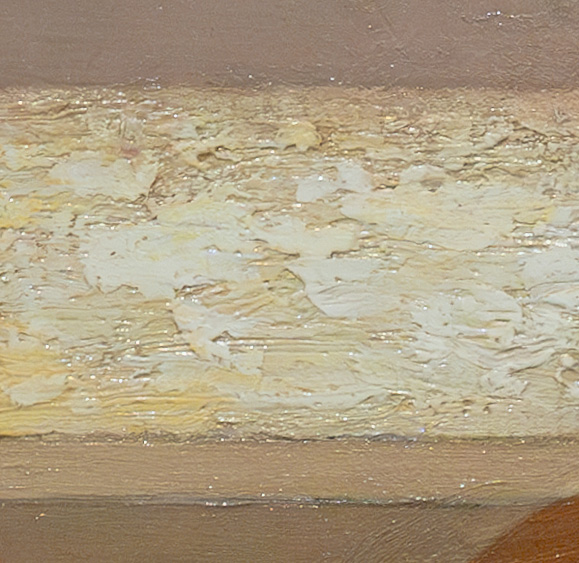 Take a look at how smooth the skin was painted, with what looks like very subtle glazing over the top. Compare that to the impasto above and evern the thickness of the paint on the fabric.
Take a look at how smooth the skin was painted, with what looks like very subtle glazing over the top. Compare that to the impasto above and evern the thickness of the paint on the fabric.
It is useful to see how he handled the translucency of the fabric below as well as the contrasting paint application of the fabric and foot.
The fabric is so lush in the painting. I love this almost abstract passage.
This little crop has it all! Look at the subtlety of the skin, the hair, the impasto of the cloth and the translucency.
I had the chance on the same trip to photograph another painting of Leighton!
Lachrymae, 1894-95 – Frederic Leighton
This painting is so cool and dramatic. It is also filled with a range of techniques and gorgeous details. I LOVE the palette too.
This is a fascinating detail. Look at how thinly painted the shadows are. It almost looks like they were scrubbed down to increase the effect of translucency in the shadows compared to the more opaque passages in the light
You can see a similar effect on the fingers here.
The impasto here is intense!
Beautiful simplification of the forms of the laurel crown.
And look how loosely this whole section is painted! You can still see the underdrawing on the column.
Thanks for taking a look! Stay tuned for a future post on Flaming June again, with even more detail!
Howard


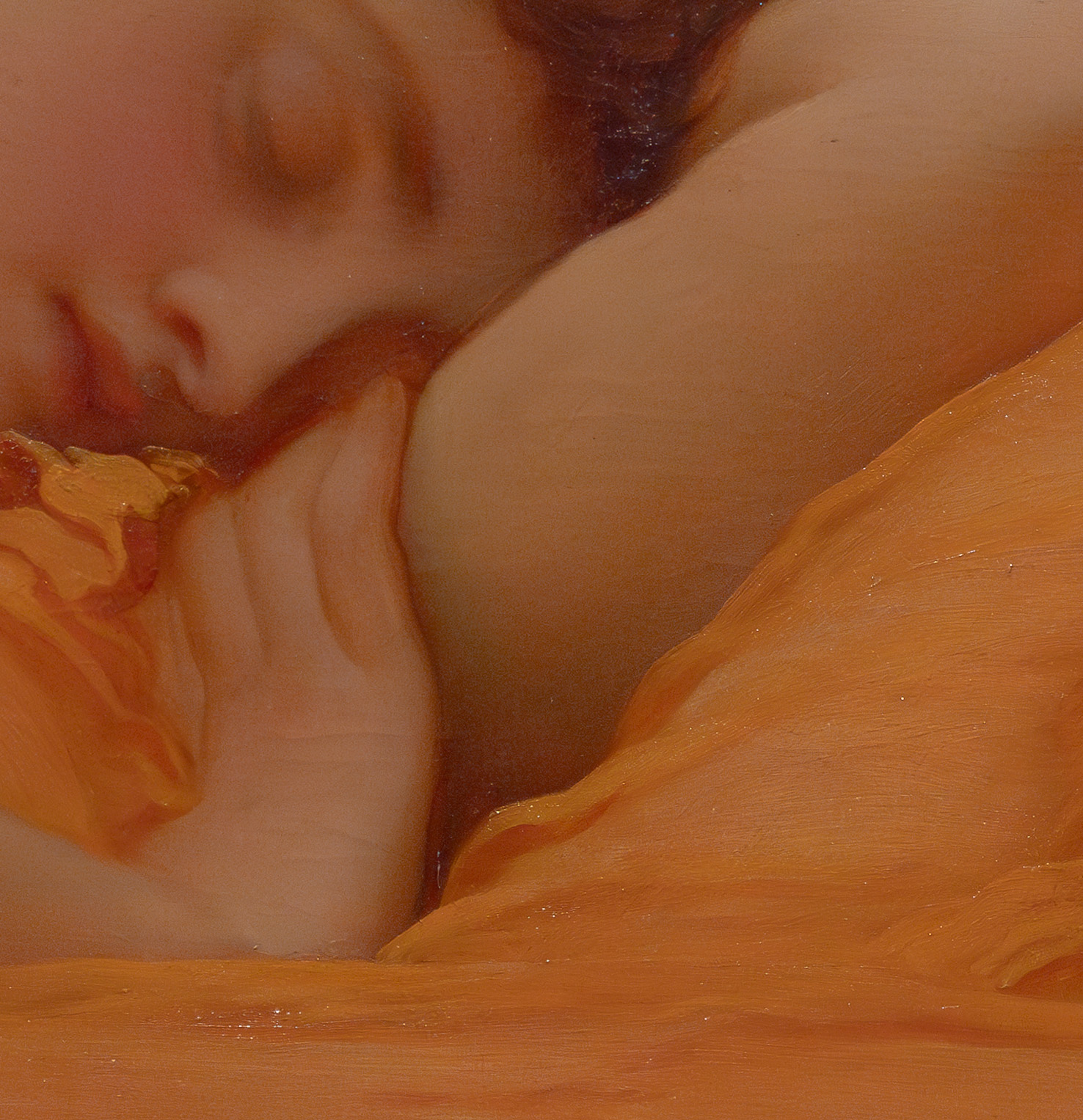
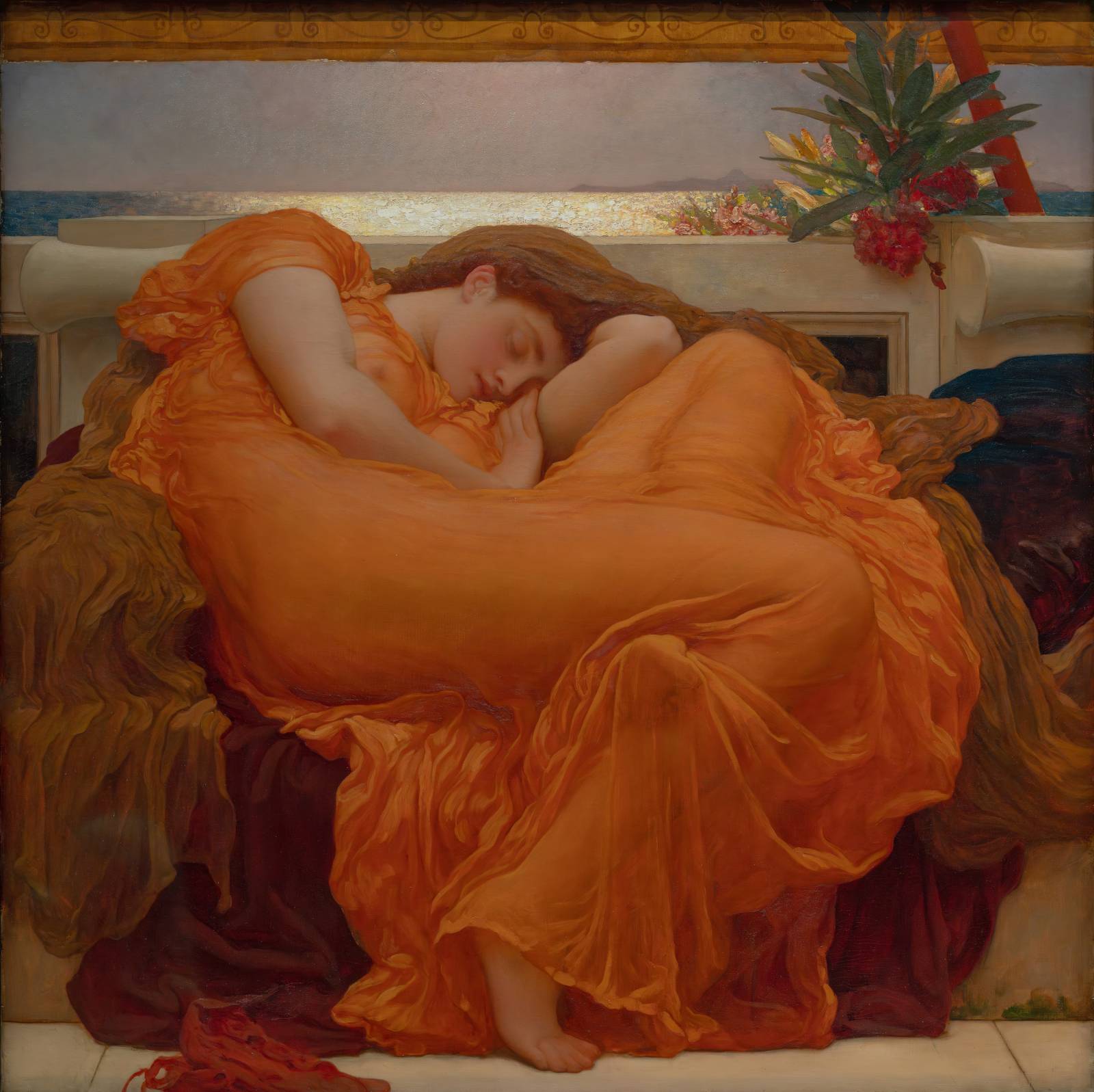
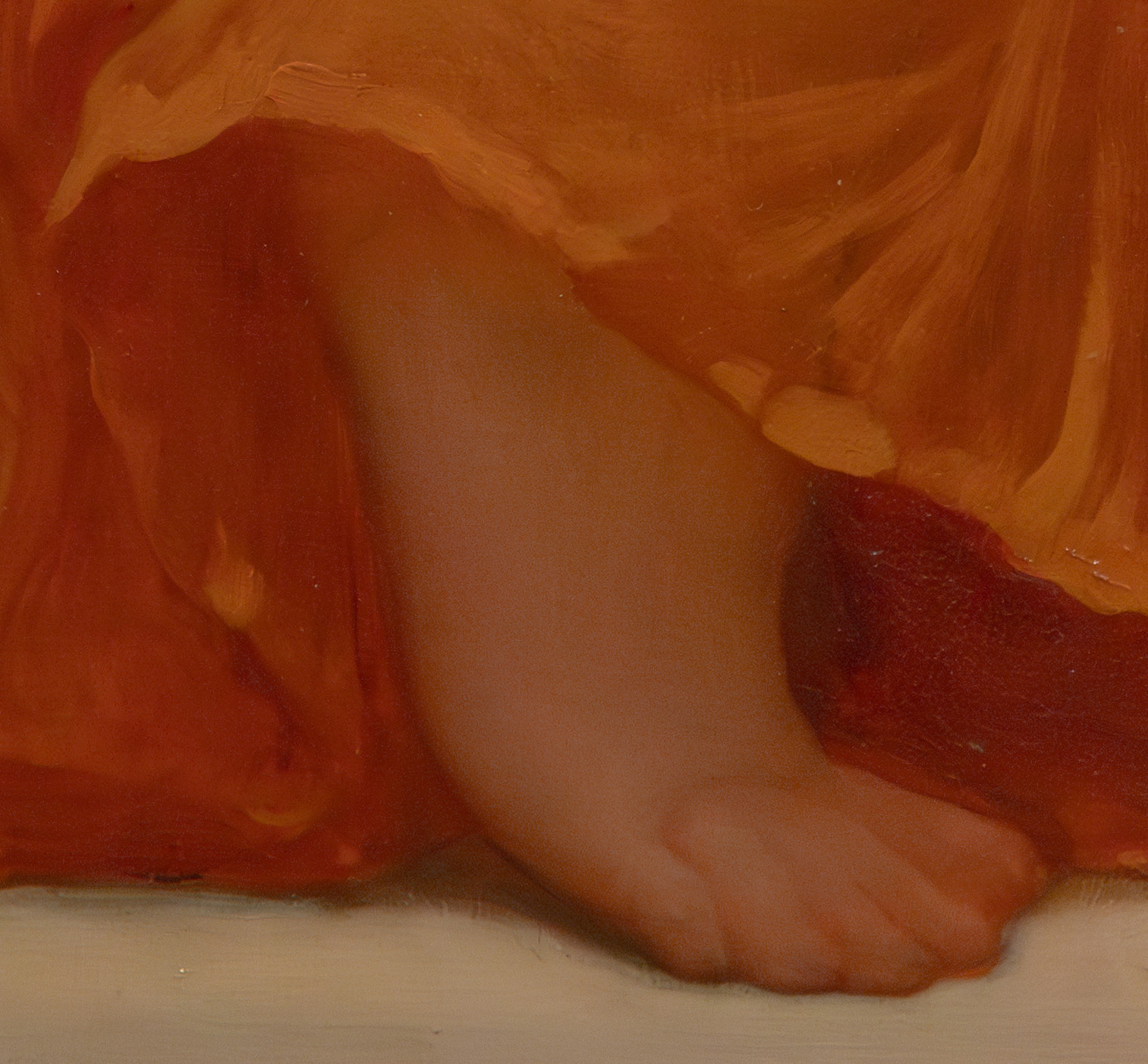
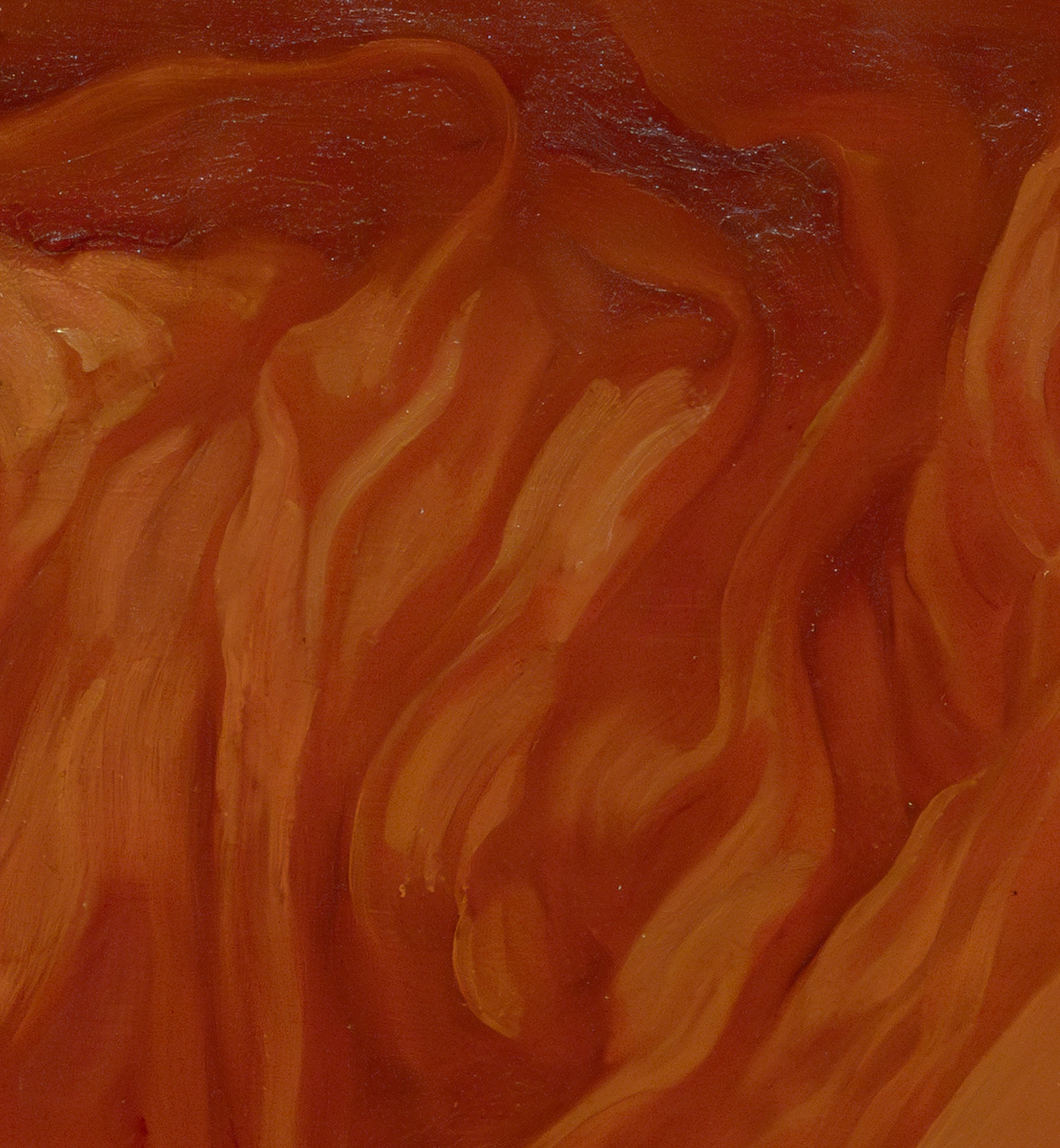

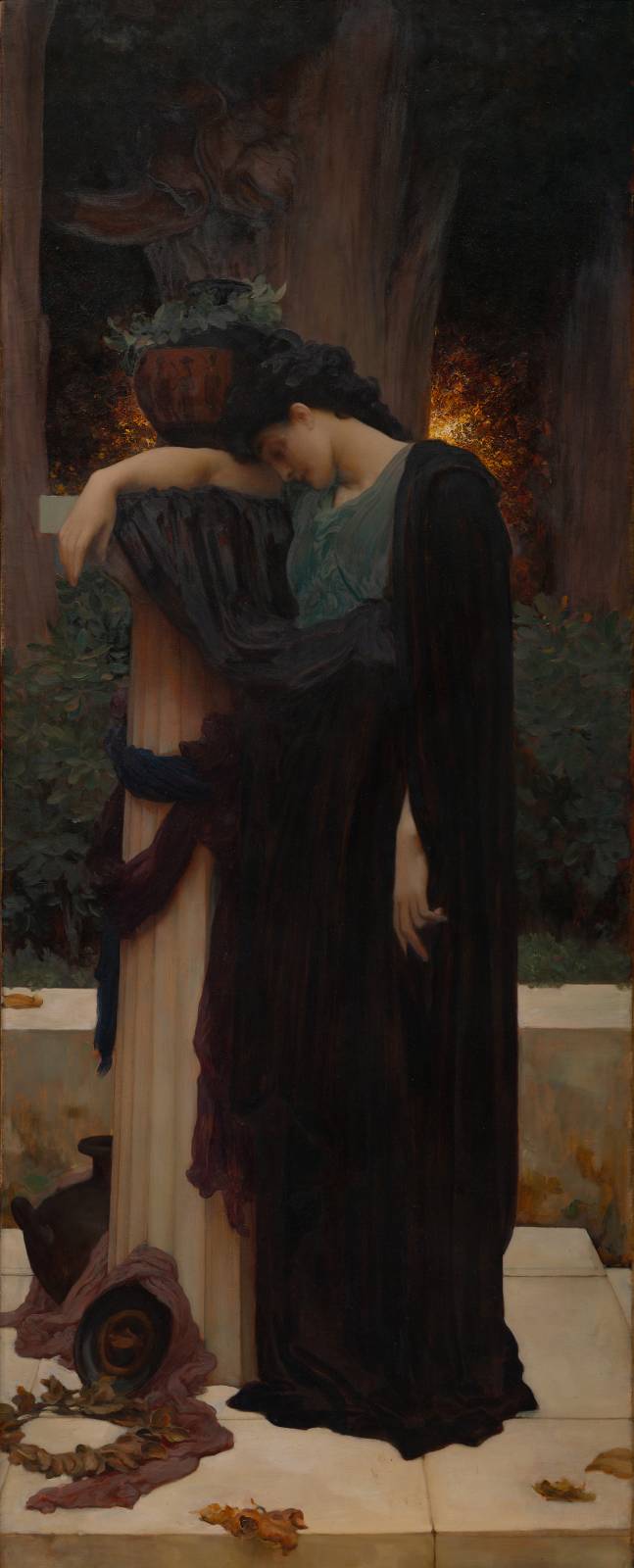
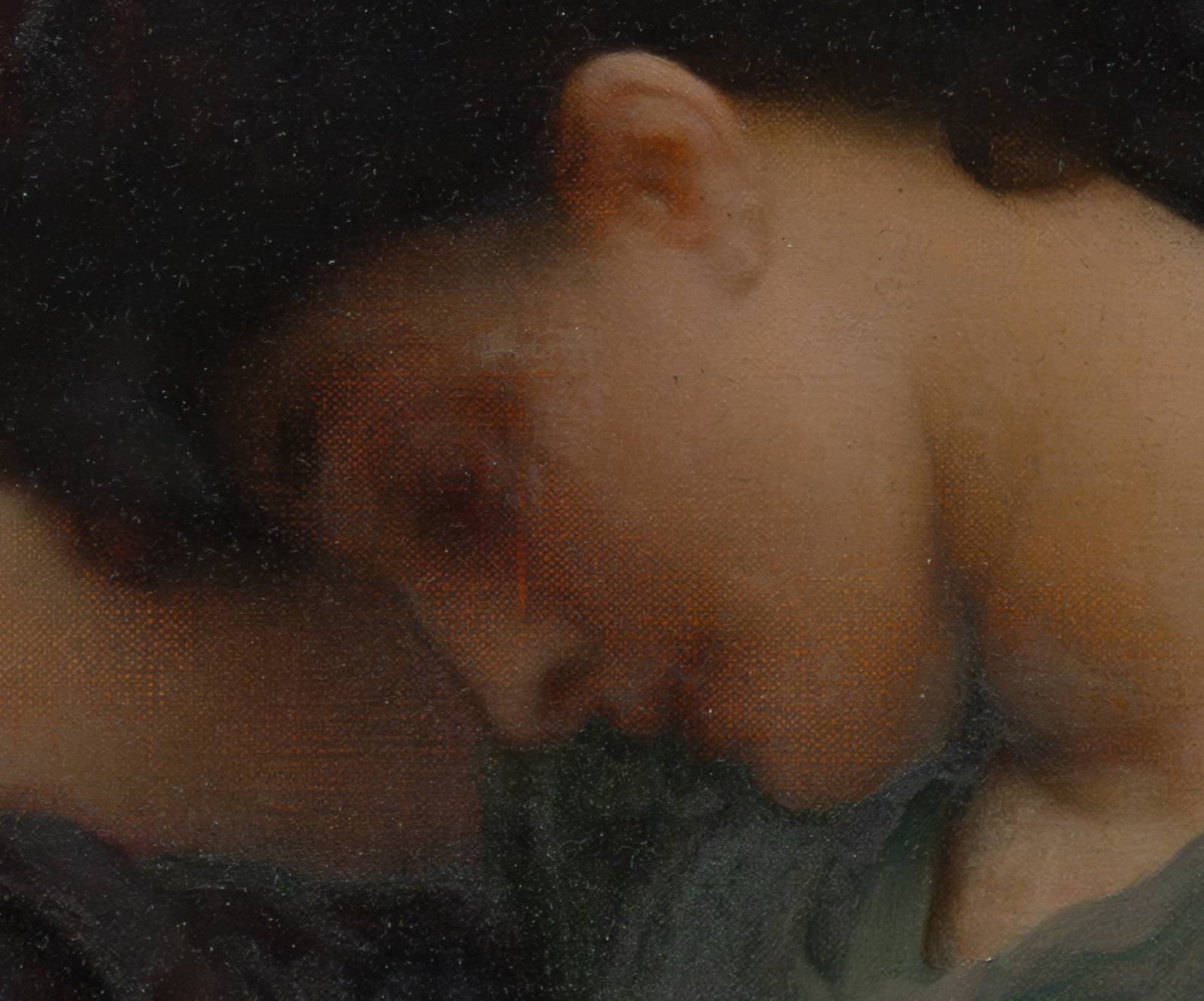
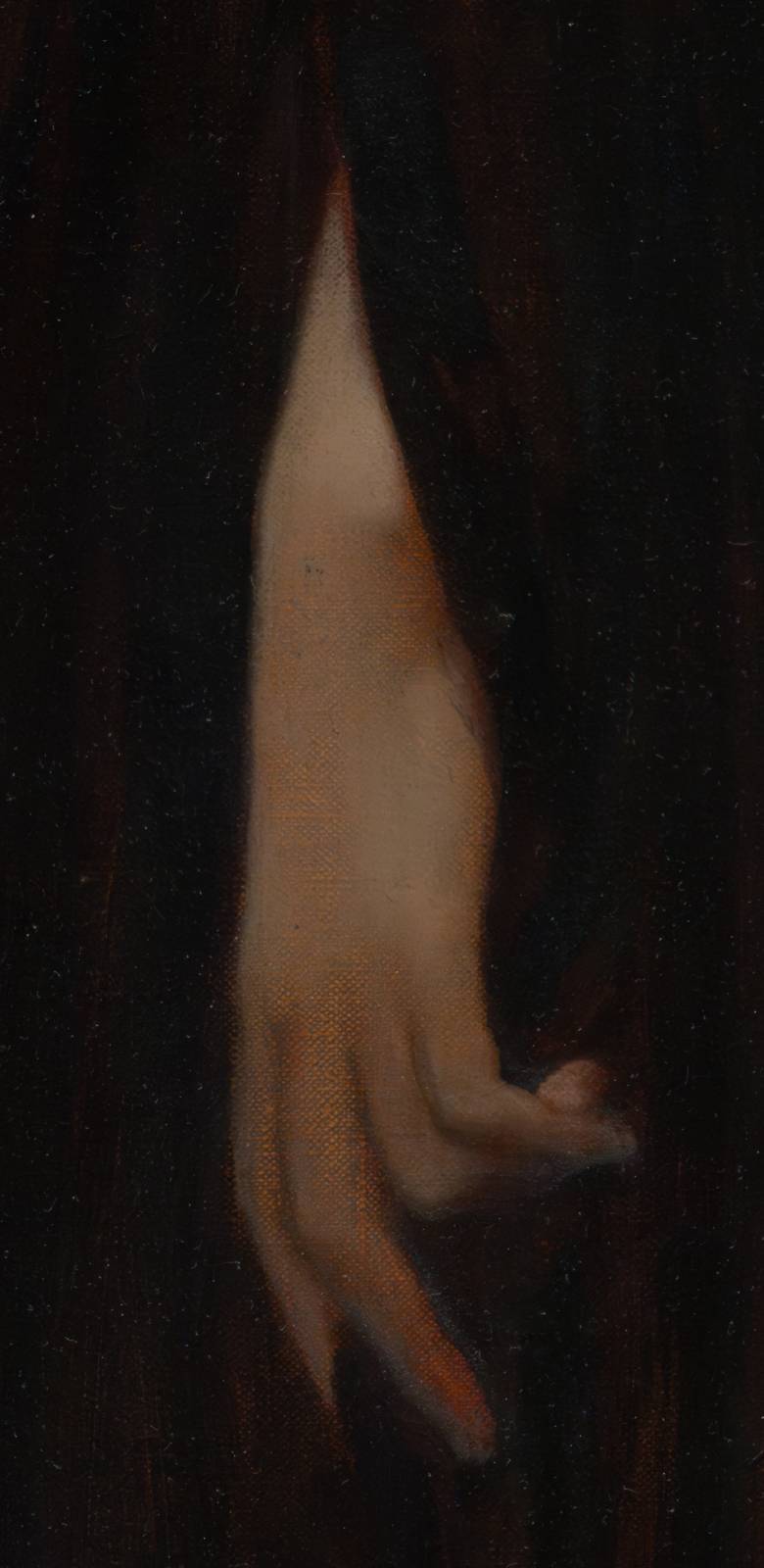
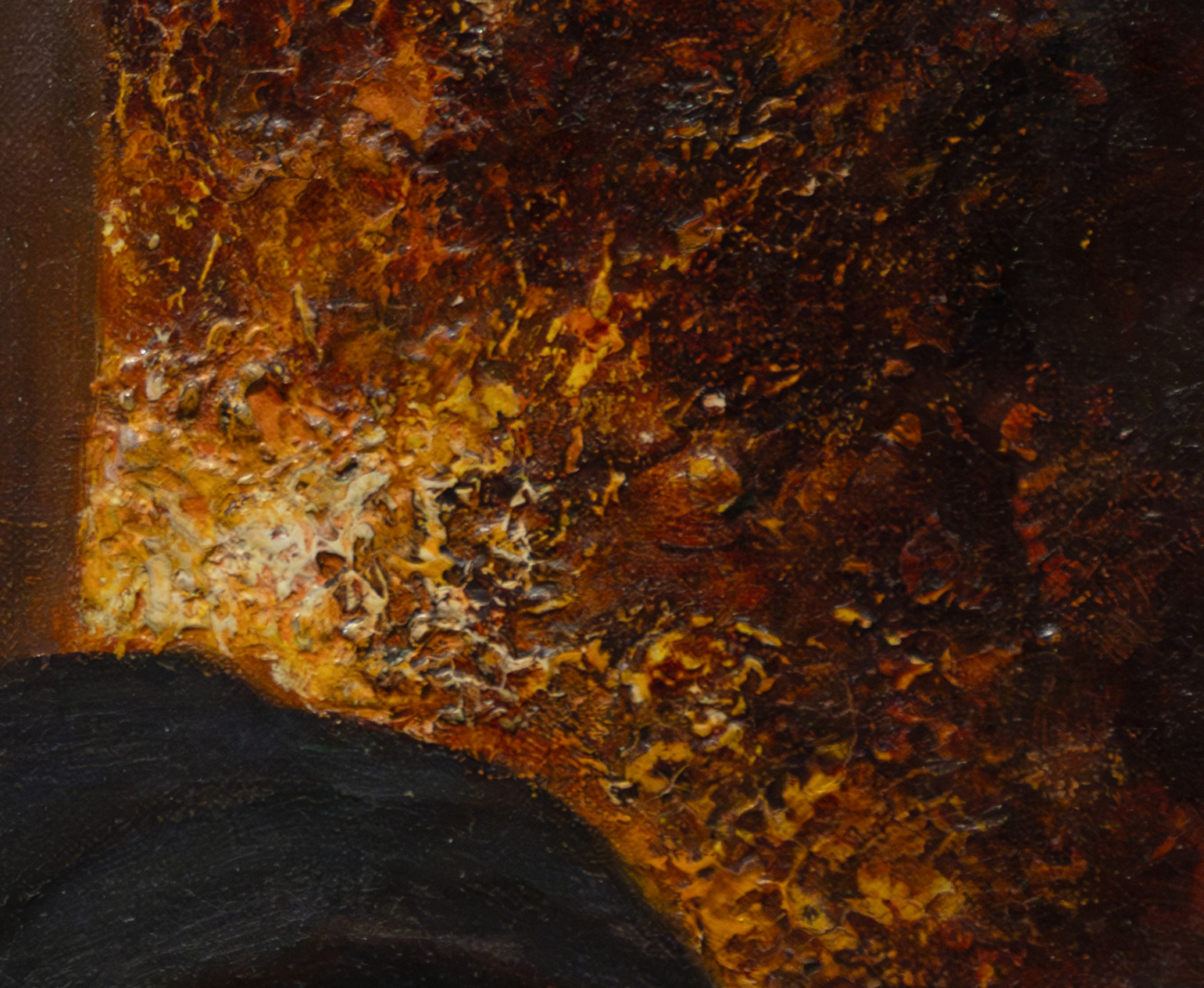



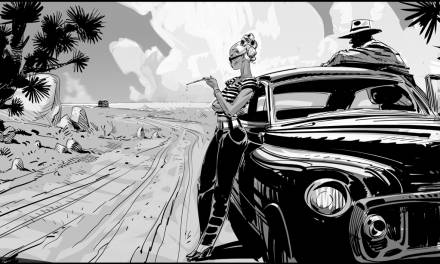


Good stuff, Howard. You always bring us good stuff.
I never expected to earn this much working from home, but last month I made almost $19,500. It’s flexible and doesn’t take up too much time, which is great for my schedule. If you’re interested in something like this, it might be worth looking into.
Adorable.
Thank you, Howard, very much.
Thanks for the deep analysis, Howard! As a painter myself, I’ve always been fascinated by Leighton’s brushwork and use of color. Your insight on “reductive” techniques is truly inspiring, especially when you contrast the two different applications. It’s a great reminder that true skill lies in knowing when to hold back, not just adding more detail.
I’m very inspired after reading this, but I have a question: could you elaborate on the “thin glazes” technique you mentioned for the skin? Did he use thinned-out oil paint, or was it achieved by layering multiple glazes? I hope to see a more detailed analysis from you soon!
I remember the first time I saw “Flaming June” was in an art book, and I was immediately captivated by its enchanting colors and composition. This article reminds me of that initial feeling of wonder. Even though it’s an old painting, I find new things every time I look at it, which I guess is the charm of classic art.
What a brilliant art review! “Flaming June” is definitely one of those works that makes you stop and stare for a long time. Thanks for sharing, I really enjoyed it!